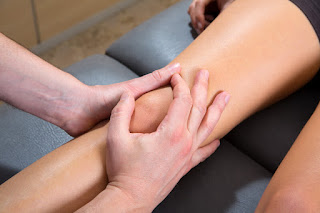Ehlers Danlos Syndrome Pictures, Type 1, Type 2, Type 3, Type 4
Ehlers danlos syndrome is not a specific syndrome but it is a group or collection of syndromes sharing same features. Common features include loose joints I.e. joints can move freely, weak tissues of skin, elastic skin I.e. Skin can stretch easily and easy bruising. It is a genetic syndrome which passes from parents to their off springs. The skin appears loose and fragile. An abnormal gene is responsible for producing abnormal protein and this protein is responsible for frailty of collagen (collagen works as a glue to join tissues). It is divided into different types on the basis of its genetic transmission.
Ehlers danlos syndrome type 1 is termed as classical ehlers danlos syndrome. In this type the skin surface is extensible beyond upper limit. Due to hyper elasticity, the atrophic scarring occurs on surface. The joints are loose enough that they can move freely. Due to free moving or loose joints, the joints show hyper mobility. Accurate diagnosis is required to confirm its type. Molecular testing is performed and in more than 90 percent cases of classical ehlers danlos syndrome, heterogeneous gene mutation is the reason. Commonly Type 5 collagen is involved.

Ehlers danlos syndrome type 2 is termed as classical like ehlers danlos syndrome. It is a lot like type 1 ehlers danlos syndrome. In this type,the skin is extensible beyond limit and have velvety texture. Atrophic scarring is not present. Like type 1, the joints are loose and show hyper mobility. Sometimes recurrent dislocation of joints can occur due to hyper mobility. The skin appears fragile and easily bruised. At some spots, ecchymoses may occur. Ecchymoses is the discoloration of skin due to bleeding under skin surface. TNXB is the gene associated with type 2 ehlers danlos syndrome.
Type 3 ehlers danlos syndrome is known as hypermobile ehlers danlos syndrome. As the name indicates it's main characteristic I.e. hyper mobility of joints. Due to hyper mobility, joints dislocation is frequent. Other features involve connective tissue disorder, patient show a positive family history of ehlers danlos syndrome and complications in muscles and joints. This type is inherited as an autosomal dominant genetic trait. Some common symptoms associated with ehlers danlos syndrome are: tachycardia, fatigue, sleep disturbances, postural orthostatic, depression, gastrointestinal tract disorders, anxiety and dysautonomia. These symptoms may impair daily life, so immediate treatment is required.
Vascular ehlers danlos syndrome is the type 4 of ehlers danlos syndrome. In this type the variation in specific gene named COL3A1 causes ehlers danlos syndrome. It occurs in patients with positive family history. At very young age, arterial rupture can occur. Perforation in sigmoid colon is seen with no pathological reason. In pregnant women, the walls of uterus may rupture with no history of C-section. Formation of carotid cavernous sinus fistula is seen with no traumatic cause. All of the above are the characteristics of type 4 ehlers danlos syndrome.
Ehlers Danlos Syndrome Type 1
Ehlers danlos syndrome type 1 is termed as classical ehlers danlos syndrome. In this type the skin surface is extensible beyond upper limit. Due to hyper elasticity, the atrophic scarring occurs on surface. The joints are loose enough that they can move freely. Due to free moving or loose joints, the joints show hyper mobility. Accurate diagnosis is required to confirm its type. Molecular testing is performed and in more than 90 percent cases of classical ehlers danlos syndrome, heterogeneous gene mutation is the reason. Commonly Type 5 collagen is involved.
Ehlers Danlos Syndrome Pictures

Ehlers Danlos Syndrome Type 2
Ehlers danlos syndrome type 2 is termed as classical like ehlers danlos syndrome. It is a lot like type 1 ehlers danlos syndrome. In this type,the skin is extensible beyond limit and have velvety texture. Atrophic scarring is not present. Like type 1, the joints are loose and show hyper mobility. Sometimes recurrent dislocation of joints can occur due to hyper mobility. The skin appears fragile and easily bruised. At some spots, ecchymoses may occur. Ecchymoses is the discoloration of skin due to bleeding under skin surface. TNXB is the gene associated with type 2 ehlers danlos syndrome.
Ehlers Danlos Syndrome Type 3
Type 3 ehlers danlos syndrome is known as hypermobile ehlers danlos syndrome. As the name indicates it's main characteristic I.e. hyper mobility of joints. Due to hyper mobility, joints dislocation is frequent. Other features involve connective tissue disorder, patient show a positive family history of ehlers danlos syndrome and complications in muscles and joints. This type is inherited as an autosomal dominant genetic trait. Some common symptoms associated with ehlers danlos syndrome are: tachycardia, fatigue, sleep disturbances, postural orthostatic, depression, gastrointestinal tract disorders, anxiety and dysautonomia. These symptoms may impair daily life, so immediate treatment is required.
Ehlers Danlos Syndrome Type 4
Vascular ehlers danlos syndrome is the type 4 of ehlers danlos syndrome. In this type the variation in specific gene named COL3A1 causes ehlers danlos syndrome. It occurs in patients with positive family history. At very young age, arterial rupture can occur. Perforation in sigmoid colon is seen with no pathological reason. In pregnant women, the walls of uterus may rupture with no history of C-section. Formation of carotid cavernous sinus fistula is seen with no traumatic cause. All of the above are the characteristics of type 4 ehlers danlos syndrome.
Ehlers Danlos Syndrome Pictures, Type 1, Type 2, Type 3, Type 4
 Reviewed by Simon Albert
on
July 05, 2019
Rating:
Reviewed by Simon Albert
on
July 05, 2019
Rating:
 Reviewed by Simon Albert
on
July 05, 2019
Rating:
Reviewed by Simon Albert
on
July 05, 2019
Rating:











